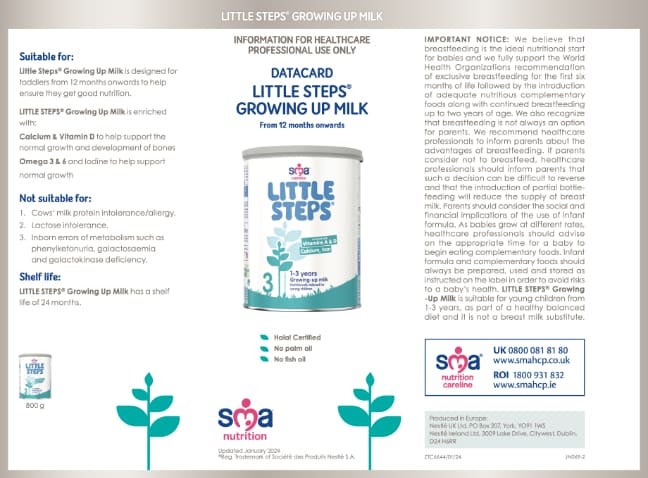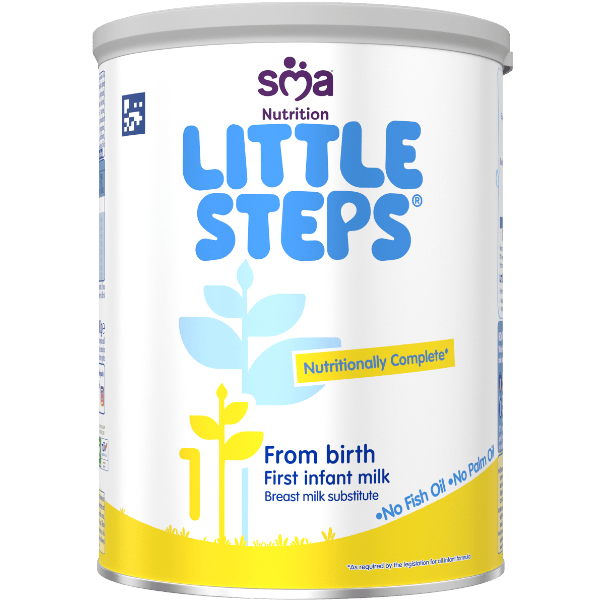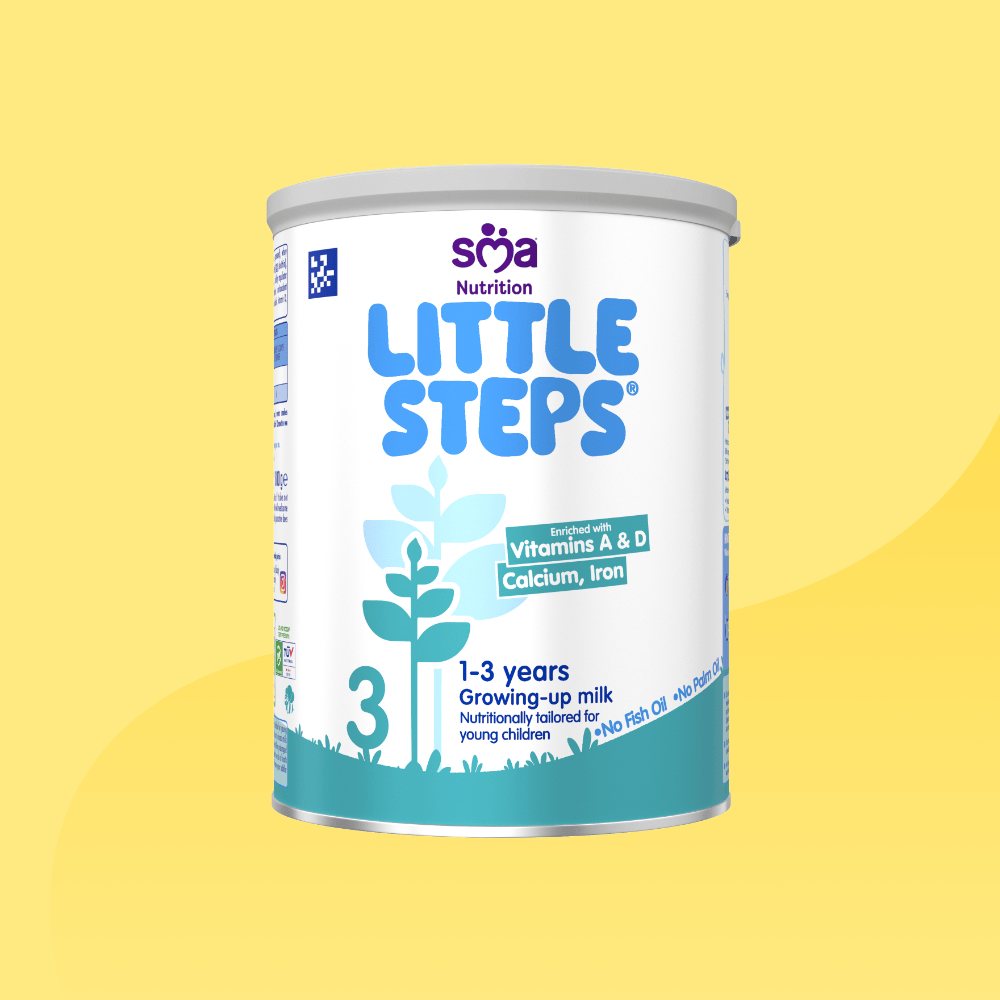LITTLE STEPS® Growing Up Milk
A fortified milk drink for young children from 12 months to 3 years, as part of a healthy balanced diet.
Data cards

Product details

LITTLE STEPS® Growing Up Milk
800 g Powder
The scoop is provided under the lid. It can be stored in suspension inside the can.
12 months to 3 years
| 1 serving = 200 ml | Amount of cooled, freshly boiled water | Number of scoops of powder | |
|---|---|---|---|
| ml | fl. oz. (approx.) | ||
| 1 beaker | 180 | 6 | 6 |
6 scoops of powder added to 180 ml (6 fl. oz. approx.) water makes 200 ml (7 fl. oz. approx.) milk drink. All toddlers have different nutritional needs, but after 12 months we recommend your child has around 400 ml of milk per day. You can feed your child 2 servings per day depending on their nutritional needs. Mix 1 scoop of powder to 30 ml (approx. 1 fl. oz.) of water. Approx. 173 scoops per can. 1 scoop = 4.6 g. Approx. 28 x 200ml servings per can.
- Do not add extra powder or water to make the drinks stronger or weaker and do not press powder into scoop. Using too much or too little powder can make your toddler ill.
- We recommend preparing each milk drink in individual beakers when required.
- For hygienic reasons, discard unfinished feed in the beaker as soon as possible.
- Made-up milk drink can be poured over cereals and mixed with food.
- Do not alter or add to milk drink unless medically directed.
- Do not warm feeds in microwave, hot spots may occur and cause scalding.
Preparation
How to prepare the toddler's drink
Whilst this product is made under strict hygienic conditions, it is not sterile. Failure to follow instructions on preparation and storage may make the toddler ill.
- Gibson S & Sidnell A. Nutrient adequacy and imbalance among young children aged 1–3 years in the UK. Nutrition Bulletin 2014; 39: 172–80.
- Walton J. National Pre-School Nutrition Survey. Summary Report on: Food and Nutrient Intakes, Physical Measurements and Barriers to Healthy Eating. 2012. IUNA.
- Domellöf M et al. Iron requirements of infants and toddlers. J Pediatr Gastroenterol Nutr 2014; 58: 119–29.
- Sidnell A, et al. Nutrient intakes and iron and vitamin D status differ depending on main milk consumed by UK children aged 12-18 months - secondary analysis from the Diet and Nutrition Survey of Infants and Young Children. J Nutr Sci 2016; 5 (32): 1–8.
- Gibson S & Sidnell A. Nutrient adequacy and imbalance among young children aged 1–3 years in the UK. Nutrition Bulletin 2014; 39: 172–80.
- Hojsak et al. Young Child Formula: A Position Paper by the ESPGHAN Committee on Nutrition. Journal of Pediatric Gastroenterology and Nutrition: January 2018 - Volume 66 - Issue 1 - p 177–185.
- Scientific Advisory Committee on Nutrition (SACN) (2016). Vitamin D and health report. Available at https://www.gov.uk/government/publications/sacn-vitamin-d-and-health-re… Accessed: January 2020.
† beneficial effect of essential fatty acids is obtained with a daily intake of 10g of linoleic acid and 2 g of alpha α -linolenic acid
IMPORTANT NOTICE:
The World Health Organisation (WHO) recommends exclusive breastfeeding during the first 6 months of life and continued breastfeeding for as long as possible. LITTLE STEPS® Growing Up Milk is suitable for young children from 1-3 years, as part of a healthy balanced diet and it is not a breast milk substitute.





